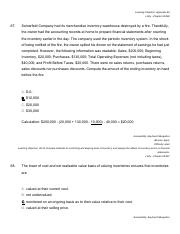
Whether you’re paying payroll taxes in Texas or New York, you must also submit your federal tax filings to the IRS, state payroll tax filings to the related state agency, and Form W-2s to the Social Security Administration. There are a lot of things to be aware of as a small business owner and payroll taxes is one of them. Fortunately, Square Payroll can ease this process for you by calculating and depositing your payroll taxes, and filing the appropriate tax filings to the federal and state agencies. In sum, employers may have flexibility to deduct at least some portion of their deferred taxes in 2020, 2021, 2022, or 2023, depending on when they choose to pay them.
Businesses can take dollar-for-dollar tax credits equal to wages of up to $5,000 if they offer paid leave to employees who are sick or quarantining. For example, if an employer was eligible to defer $20,000 for the payroll tax deferral period, paid $0 of the $20,000, and deferred $20,000 for the payroll tax deferral period, the employer needs to pay $10,000 no later than December 31, 2021 and the other $10,000 on December 31, 2022 using EFTPS. A tax-exempt employer is entitled to defer deposit and payment of the employer’s share of Social Security tax prior to determining whether the employer is entitled to the Work Opportunity Tax Credit. Furthermore, a tax-exempt employer may claim the Work Opportunity Tax Credit on Form 5884-C, Work Opportunity Credit for Qualified Tax-Exempt Organizations Hiring Qualified Veterans, without regard to whether the employer has deferred deposit and payment of the employer’s share of Social Security tax. Since the Work Opportunity Tax Credit is processed on Form 5884-C separately from its employment tax return (typically Form 941), the amount reported on line 11 of Form 5884-C may not be refunded in full if the employer also deferred the employer’s share of Social Security tax on its Form 941.
Topic No. 751, Social Security and Medicare Withholding Rates
In comparison, with a traditional 401(k), no income taxes are deducted on employees’ payroll-deferred contributions, although FICA and FUTA taxes will be taken from amounts deferred; income taxes are then owed on withdrawals made during retirement. For a Roth 401(k), FICA/FUTA and income taxes are deducted from contributions, while withdrawals during retirement are tax free. Social Security and Medicare payroll taxes are collected together as the Federal Insurance Contributions Act (FICA) tax. The largest tax burden for households in the bottom income quintile (the bottom fifth) tends to come from the payroll tax, followed by excise taxes and a small amount of corporate tax. The average federal tax burden tends to be much lower for low-income households than for high-income households.
If an employer uses a third party to file, report, and pay employment taxes, different rules will apply depending on the type of third-party payer the employer uses. Certain employers do not have to make deposits during a return period but must pay their employment tax liability with a timely filed Form 941, Form 943, Form 944, or Form CT-1. Employers that do not have to make deposits and fail to pay their employment taxes timely will generally owe Payroll Taxes in 2020 a failure to pay penalty. Employers that fail to meet employment tax deposit obligations timely and that fail to pay their taxes with a timely filed Form 941, Form 943, or Form 944 will generally owe both failure to deposit and failure to pay penalties. Households can have negative federal income tax rates if they receive refundable tax credits. The EITC is a refundable credit that subsidizes earnings, particularly for workers with children.
Quarterly Refunding
Employees can submit the current 2019 Form W-4 through the end of the year or wait until the new 2020 Form W-4 is finalized and released, likely in November. The new form is expected to include
major revisions designed to make accurate income-tax withholding easier for employees. Under a provision of the Affordable Care Act, the employee-paid portion of the Medicare FICA tax is subject to the 0.9 percent additional Medicare tax on amounts over statutory thresholds that are not inflation-adjusted and thus apply to more employees each year. Prior to the enactment of the PPP Flexibility Act, an employer that received a PPP loan was not permitted to defer deposit and payment of the employer’s share of Social Security tax after the receipt of the lender’s decision forgiving all or a portion of the employer’s PPP loan. The PPP Flexibility Act, enacted on June 5, 2020, amends section 2302 of the CARES Act by striking the rule that would have prevented an employer from deferring the deposit and payment of the employer’s share of Social Security tax after the employer receives a decision that its PPP loan was forgiven by the lender.
Boston Market’s Legal Trouble Could Spell the End For the Chain – Eat This, Not That
Boston Market’s Legal Trouble Could Spell the End For the Chain.
Posted: Wed, 16 Aug 2023 16:08:47 GMT [source]
Employer F may file a Form 7200 to request a credit or refund of this amount in advance of the close of the quarter (but not for any amount of the employee retention credit that was already used to reduce the deposit obligation). If Employer F does not request an advance, it may request that the $1,000 overpayment be credited or refunded when it files its second quarter Form 941. Per IRC 6656(b)(1), there is a time sensitive four-tier penalty system for late deposits.
How does the federal tax system affect low-income households?
In no case will employers be required to make a special election to be able to defer deposits and payments of these employment taxes. However, the employer should report the deferred taxes on the appropriate line on its employment tax return, such as line 13b on Form 941. Proposals to increase payroll tax rates or the applicable payroll tax base lower economic output by reducing the return to labor.
Biden has proposed applying Social Security payroll taxes to higher-income taxpayers, focusing on those earning above $400,000.[10] This proposal keeps the Social Security wage cap’s existing threshold of $137,700 (indexed to wage growth) but applies the 12.4 percent tax on wages over $400,000. This creates a “donut hole” in the Social Security wage base, where wages between $137,000 and $400,000 are not taxed. Filing a Form 941-X to claim a refund or credit of the tax, including for the first calendar quarter. However, the employer may file a Form 941-X to apply a credit (including the FFCRA paid leave credits and the employee retention credit) against some or all of the employer’s share of Social Security tax and claim a refund or credit of the tax on that basis.
RSM US LLP is a limited liability partnership and the U.S. member firm of RSM International, a global network of independent assurance, tax, and consulting firms. The member firms of RSM International collaborate to provide services to global clients, but are separate and distinct legal entities that cannot obligate each other. Each member firm is responsible only for its own acts and omissions, and not those of any other party. The taxable wage cap is subject to automatic adjustment each year based on
increases in the national average wage, which last year rose by 3.6 percent.
Will Student Loan Debt Force Gen X To Depend on Dubious Social Security? – AOL
Will Student Loan Debt Force Gen X To Depend on Dubious Social Security?.
Posted: Mon, 21 Aug 2023 11:43:07 GMT [source]
He recommends levying the 12.4 percent Social Security payroll tax on workers with wages over $250,000. He also proposes a new 7.5 percent payroll tax levied on employers.[13] This latter tax would be used to fund Medicare for All and would include an exemption for an employer’s first $2 million in payroll to relieve small businesses from the tax. On a dynamic basis, the proposal would raise about $1.57 trillion between 2021 and 2030. Revenue collections are lower on a dynamic basis as economic output is smaller, leading to a loss of individual income tax and payroll tax revenue. Former Vice President Joe Biden (D) has recommended applying the same tax to wage income above $400,000. Sen. Warren has proposed applying a 14.8 percent Social Security payroll tax to wages above $250,000, raising the rate from 12.4 percent.
Summary of the Tax Credits Claimed on the Form 1040, Tax Year 2020
On a dynamic basis, we estimate that this proposal would raise about $1.3 trillion from 2021 to 2030. The difference between our conventional and dynamic estimates is the result of lower individual income tax revenue and payroll tax revenue from a smaller economy. Taxpayers work less under the higher payroll tax burden, resulting in a revenue loss of about $254 billion over the budget window. The economic effect of this proposal is like Warren’s proposal, with a slightly smaller magnitude due to the lower payroll tax rate (12.4 percent, as opposed to 14.8 percent under Warren’s proposal).
Low-income households also indirectly pay some corporate income tax, to the extent that corporations pass tax burdens back to workers’ wages. Sanders’ proposal to levy a new 7.5 percent payroll tax on wages is estimated to raise about $4.1 trillion between 2021 and 2030 on a conventional basis. Revenue increases over the budget window, rising from $356 billion in 2021 to $486 billion in 2030. We estimate Warren’s proposal to levy a 14.8 percent Social Security payroll tax on wages above $250,000 would raise $1.89 trillion between 2021 and 2030 on a conventional basis.
IRS Issues Limited Guidance on Employee Payroll Tax Deferral and Puts Onus on Employers
The employer should report the amount deposited as the liability on Form 941 (for a monthly depositor) or on Form 941, Schedule B, Report of Tax Liability for Semiweekly Depositors (for a semiweekly depositor) on the date of the deposit to avoid assessment of failure to deposit penalties. The IRS intends to issue a reminder notice to employers before each applicable due date. For example, if an employer accumulates $110,000 of liabilities and anticipates a $20,000 employee retention credit, the employer must still deposit the next day under the $100,000 next-day deposit rule but is only required to deposit $90,000.
- Employers are responsible for withholding the 0.9% Additional Medicare Tax on an individual’s wages paid in excess of $200,000 in a calendar year, without regard to filing status.
- We’ve also provided some links to the IRS and state agencies so you can learn more about payroll taxes and how to calculate an employee’s paycheck.
- The employer for whom services are provided who does not have control of the payment of wages may not defer deposit and payment of the employer’s share of Social Security tax.
- However, the employer may file a Form 941-X to apply a credit (including the FFCRA paid leave credits and the employee retention credit) against some or all of the employer’s share of Social Security tax and claim a refund or credit of the tax on that basis.
- This is the result of lower economic output from fewer hours worked, leading to lower after-tax incomes across the distribution.
The CARES Act treats these amounts as timely paid if 50% of the deferred amount was paid by Dec. 31, 2021, and the remainder by Dec. 31, 2022. It covers personal income taxes and social security contributions paid by employees, social security contributions and payroll taxes paid by employers, and cash benefits received by workers. It illustrates how these taxes and benefits are calculated in each member country and examines how they impact household incomes. The results also enable quantitative cross-country comparisons of labour cost levels and the overall tax and benefit position of single persons and families on different levels of earnings. The publication shows average and marginal effective tax rates on labour costs for eight different household types, which vary by income level and household composition (single persons, single parents, one or two earner couples with or without children).
Thus, after waiting three weeks for guidance, employers are largely left in the same state of confusion they were in when the Memorandum was first issued. Unless Congress acts to eliminate the payroll tax repayment obligation, this deferral will likely have limited impact on most taxpayers. On August 8, 2020, President Trump issued a Memorandum to the Secretary of the Treasury authorizing the deferral of payroll taxes for certain employees from September 1, 2020 through December 31, 2020. Employers and payroll processors have eagerly awaited guidance from the IRS to address significant questions regarding implementation of the deferral.
How to Calculate Payroll Tax In 2020
Like the other payroll tax proposals, taxpayers earning wages below the threshold of the new levy would experience a drop in after-tax incomes on a dynamic basis. This is the result of lower economic output from fewer hours worked, leading to lower after-tax incomes across the distribution. The Form 7200 can be filed at any time before the end of month following the quarter in which the qualified wages were paid.
Most low-income households do not pay federal income taxes, typically because they owe no tax (as their income is lower than the standard deduction) or because tax credits offset the tax they would owe. When the two payroll tax proposals are combined, we estimate that the decline in economic output would reduce revenue collection by $828 billion over the budget window. The difference in revenue collection over each score rises over time, going from a $71 billion revenue loss in 2021 to $96 billion in lost revenue by 2030. Warren also proposes an increase in the Social Security payroll wage base, but at a different wage level and at a different tax rate than Biden.

Despite the general rule that taxes are deductible in the year paid, taxes paid within 8½ months after the end of the tax year may be deducted in the prior tax year if the recurring-item exception under Sec. 461(h)(3) applies. Note that raising the payroll tax wage base would encourage tax avoidance by high-income taxpayers, who may try to recategorize their labor income to avoid payroll taxes. Payroll taxes are tied to benefit formulas for Social Security under current law, and benefit levels may increase under proposals to increase the Social Security payroll tax wage base.
Those in the 99th percentile would see a 2.91 percent drop in after-tax income, driven by the rise in the payroll tax rate on wages earned over $250,000. Klobuchar and Buttigieg’s proposal to levy the Social Security payroll tax on wages above $250,000 is estimated to raise about $1.55 trillion between 2021 and 2030 on a conventional basis. Tax collections would rise over the budget window, going from $136 billion in 2021 to $181 billion in 2030. On August 8, President Trump signed an Executive Order, Deferring Payroll Tax Obligations in Light of the Ongoing COVID-19 Disaster, which deferred the employee portion of Social Security payroll taxes for certain individuals. On August 28, Treasury Department released guidance providing additional detail for the implementation of this Executive Order.
